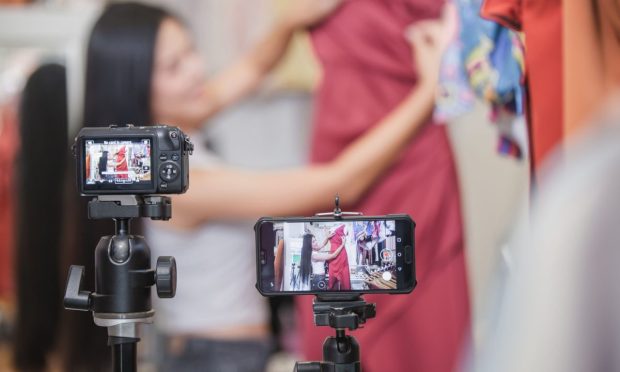Does Livestream Shopping Have a Future?

HSN and QVC both pioneered the concept of live, televised shopping, enabling customers to witness product demonstrations and make purchases in real time. Traditionally popular with consumers between the ages of 35 and 64, the concept has gained popularity among a much younger cohort, especially during the pandemic, as social media platforms like Instagram and TikTok launched their own livestream shopping solutions.
For example, during the COVID pandemic, Bloomingdale’s organized over 50 livestream shopping events to connect with customers while they were unable to visit physical stores. The streams included makeup tutorials, cooking classes, fitness sessions and discussions on sustainability in fashion.
Since then, leading retailers such as Macy’s, Dick’s Sporting Goods and American Eagle have invested heavily in livestream shopping during peak periods such as back-to-school and holidays, offering high-value promotions.
Despite being a favorite among social media influencers and brands, Instagram recently terminated Live Shopping, a feature that permitted creators to tag products and promote links during live broadcasts. The move follows Facebook’s similar announcement to end its interactive shopping experiment in August.
The move has dealt a significant blow to hundreds of thousands of brands and agencies that rely on live shopping as a crucial marketing tool for product promotion. Since its launch in 2020, Live Shopping on Instagram has been used by thousands of brands and creators. Following the social media platform’s discontinuation of the feature, while creators can still livestream on Instagram, they will not be able to seamlessly incorporate product links during their sessions. This limitation may prompt many creators to move to other platforms.
Brands that Leverage Instagram, TikTok
As part of its back-to-school strategy for 2022, American Eagle, along with several other multi-location retailers, utilized TikTok to engage with its primary customer base. Since then, the company has scheduled a weekly live shopping show on TikTok, showcasing influencers and store staff from various locations in the U.S. to generate anticipation among shoppers for the upcoming academic year. Additionally, American Eagle has expanded its visibility on Snapchat by offering an “AE Lens” that allows shoppers to participate in an interactive augmented reality game and gain points in the brand’s loyalty program.
In April 2021, Petco and Aldo both ventured into the world of livestream events. Petco’s event was held on Facebook, featuring a combination of a pet fashion show and a dog adoption drive, while Aldo collaborated with a celebrity stylist and a TikTok star for its first live shopping event.
But besides big-name brands and retailers, many small and medium-sized businesses (SMBs) turn to these platforms to reach more potential customers than they ever could on their own. In fact, more than half of small businesses that have utilized TikTok report a significant improvement in their overall marketing performance, with 78% reporting a favorable return on investment (ROI) from their TikTok advertisements. Additionally, over 50% of these brands have achieved a positive ROI within just six months of implementing their TikTok advertising tactics.
Ditching Dependency
Some retailers have decided to create their own livestream shopping platforms rather than having to depend on third-party apps like Facebook, Instagram or TikTok.
One example is resale platform Poshmark, which has its own platform for sellers and buyers to engage in livestream shopping. Macy’s also hosts its own livestream on its website every week throughout the year.
Walmart, for its part, collaborated with TalkShopLive, a streaming, social buying, and selling platform, to launch a live shopping content strategy in February 2022. By utilizing its existing infrastructure, Walmart organized live back-to-school fashion events and streamed content related to college moving checklists and dorm life. The back-to-school shows hosted by Walmart featured celebrities, influencers, and store associates and have been successful in engaging customers.
Another retailer that joined the trend of launching its own “Livestream Shopping” channel in 2021 is department store chain Nordstrom. Amazon has also adopted livestream shopping as a marketing strategy, featuring a range of interactive videos from brands and influencers on its site throughout the day, reminiscent of QVC-style programming.
But retailers that don’t have the same level of brand recognition as Macy’s, Nordstrom or Walmart are left to depend on existing platforms, so the potential ban of TikTok may loom large for smaller brands — unless and until someone else steps up.
See also: What a Ban on TikTok in the US Could Mean for Brands and Retailers

